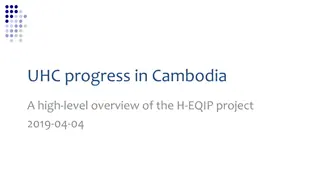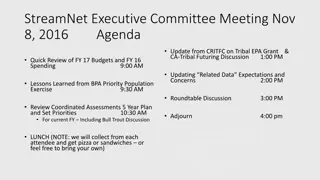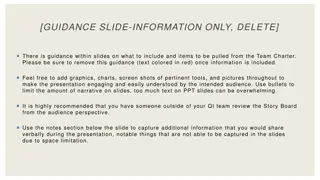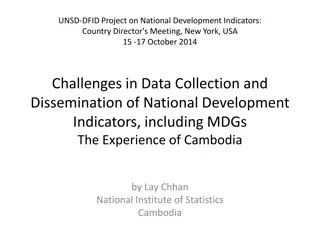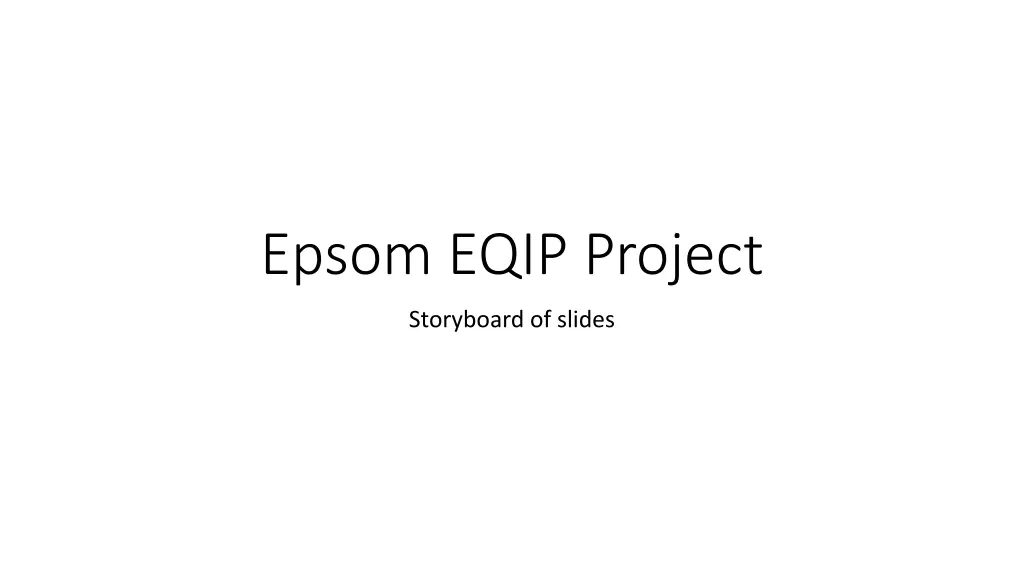
Developing Standardized Screening Tool for Children's Mental Health Status
"Follow the journey of the Epsom EQIP project through its storyboard, problem statement, process mapping, cause and effect analysis, and aim statement to create a standardized screening tool for identifying mental health issues in children. Explore measurement ideas and baseline measures for effective implementation by February 2022."
Uploaded on | 2 Views
Download Presentation

Please find below an Image/Link to download the presentation.
The content on the website is provided AS IS for your information and personal use only. It may not be sold, licensed, or shared on other websites without obtaining consent from the author. If you encounter any issues during the download, it is possible that the publisher has removed the file from their server.
You are allowed to download the files provided on this website for personal or commercial use, subject to the condition that they are used lawfully. All files are the property of their respective owners.
The content on the website is provided AS IS for your information and personal use only. It may not be sold, licensed, or shared on other websites without obtaining consent from the author.
E N D
Presentation Transcript
Epsom EQIP Project Storyboard of slides
Problem statement The epilepsy team don t know which children are struggling. Mental health problems don t get picked up until very severe. This is too late and leaves children in pain for too long.
Process map Clinic Patients ask for help Epilepsy diagnosis Epilepsy Nurse Support appointment NHS Apps and websites CAMHS TREATMENT
Cause and effect fishbone People Process Equipment Epilepsy nurses not always able to come to clinic Focus on only severe cases No psychologist in our hospital(s) We don t know who needs mental health support Staffing levels very stretched Child might not want to talk with parent present No screening tool in use CAMHS support only available for most severe cases Clinics very busy Materials Management Environment
Aim statement What are we trying to accomplish? To develop a standardised screening tool to identify the mental health status of ALL new patients by February 2022 SPECIFIC To create a standardised screening tool for assessing mental health that will identify children in need of help. MEASURABLE ACHIEVABLE RESULTS FOCUSSED TIME-BOUND An iterative process
Your measurement ideas YOUR AIM A list of measures you COULD choose from To develop a standardised screening tool to identify the mental health status of all new patients by February 2022 Numbers of patients who were screened using HEADS-ED tool Easy Reliable Reproducible Meaningful Informing
Choose & define your baseline measures Aim Aim To develop a standardised screening tool to identify the mental health status of all new patients by February 2022 Chosen measure Chosen measure Numbers of patients who were screened using HEADS-ED tool Inclusions Inclusions All NEW epilepsy patients who are >5 or school age (as starting school can often be a trigger for issues with anxiety) Exclusions Exclusions Children <5 years old or in pre-school Those patients with severe neurodisability who are unable to communicate Sense check! How long would it take to generate 20 data points for your baseline? Sampling method & frequency Count and analysis of completed HEADS-ED forms on a 2-weekly basis. Can you do this for cases retrospectively Can you do this for cases retrospectively? no forms can t be filled out retrospectively as the information has not been routinely gathered prior to this project. 7
PDSA 1a: Abandon the Strengths and Difficulties tool Contact other teams and research existing screening tools for mental health in children. Epilepsy team reviewed this tool and discussed as a team. Consensus was that the tool was too long and wouldn t work for routine clinic appointments. Contacted St George s Neuro team and asked if they could send us the screening tool that they use. They sent across the Strengths and Difficulties tool.
PDSA 1b: Adopt the HEADS-ED tool Research existing tools that are validated for use in children to screen for mental health concerns. Epilepsy team reviewed the various tools mentioned in the article and discussed which might work. HEADS-ED tool chosen as best for inclusion in existing clinic/community appointments. Internet search for existing screening tools showed a useful article on Don t forget the bubbles website discussing several screening tools available for use in children.
PDSA 2: Adapt the tool to show: What help is already in place Where the patient might go for additional support. To see if HEADS-ED works for use in existing clinic appointments. Discussion of how the team found using the tool showed that it was simple and easy to use in clinic appointments. Noted that it would be useful to add in additional information. Start using the HEADS-ED tool in clinic and trial it in clinic appointments for new epilepsy patients. 10
PDSA 3: Click here to edit text box To see if adapted HEADS-ED tool works better for use in routine clinic appointments. Click here to edit text box Click here to edit text box 11
Quadrant graphic Click here to edit text box Click here to edit text box Click here to edit text box Click here to edit text box 12








